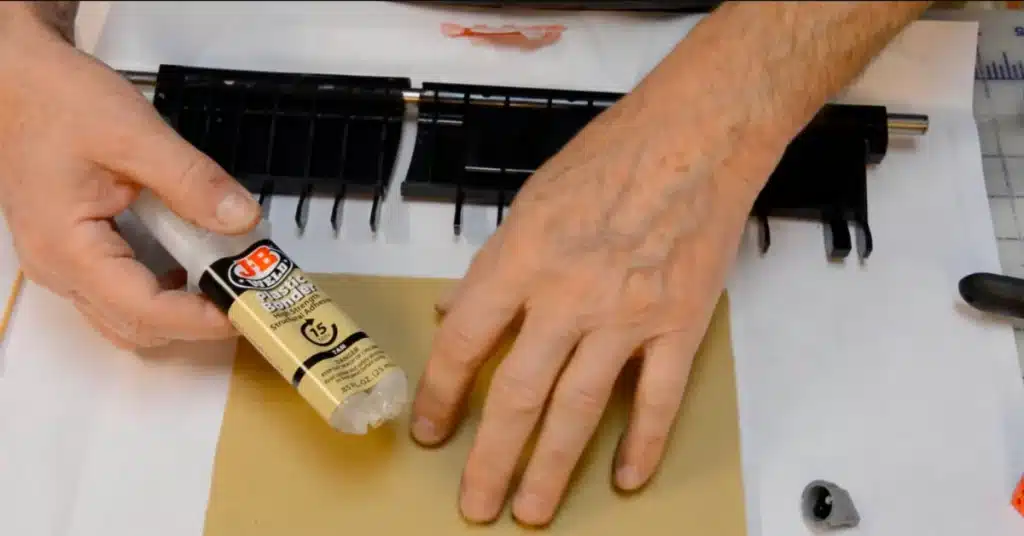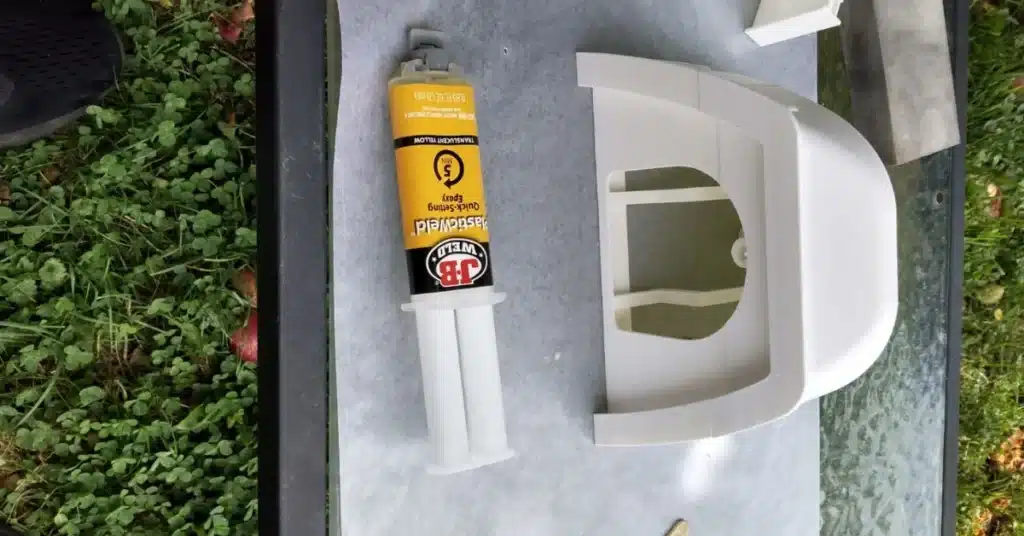JB Weld Plastic Bonder is more versatile than Plastic Weld. The Plastic Bonder dries slower and has a lower bonding strength than the Plastic Weld.
Key Takeaways
- JB Weld Plastic Bonder is a two-part urethane adhesive used to bond metal, plastic, wood, ceramics, etc.
- JB Weld Plastic Weld is a two-part epoxy adhesive that works better on different types of plastic, fiberglass, glass, etc.
- The Plastic Weld adhesive dries faster than Plastic Bonder and offers a stronger bond.
Finding the right plastic bonding adhesive is a tricky job. But you might find today’s JB Weld Plastic Bonder Vs. Plastic Weld helpful.
Both are multipurpose adhesives that offer great bonding for various types of material and are reusable.
Read More: Plastic Glue vs. Super Glue
Overview of JB Weld Plastic Bonder
JB Weld Plastic Bonder is a two-part urethane adhesive used to fill in gaps and fix bumpers or various automotive parts.
This adhesive is convenient and reliable for creating bonds on thermoplastic, metal, glass, ceramic, various coated metals, etc.
With its resealable cap, you can reuse the adhesive for a long time. And once dried, it creates a durable and permanent bond.

Overview of JB Weld Plastic Weld
The JB Weld Plastic Weld is yet another two-part epoxy adhesive, quite similar to Plastic Bonder.
However, it is stronger and more reliable for gluing various plastic materials.
It sets and dries faster than Plastic Bonder and takes at least an hour to cure completely.
JB Weld Plastic Bonder vs. Plastic Weld
| Feature | JB Weld Plastic Bonder | JB Weld Plastic Weld |
| Adhesive Type | Two-Part Urethane Adhesive | Two-Part Epoxy |
| Set Time | 15 Minutes | 5 Minutes |
| Cure Time | 30 Minutes | 1 Hour |
| Tensile Strength | 3770 PSI | 3900 PSI |
| Cure Color | Tan/Black | Translucent Yellow/Off-White |
| Cost | $8.99 (25ml) | $8.99 (25ml) |
Read More: What Glue Sticks Plastic to Plastic?
Detailed Comparison
Adhesive Types
The JB Weld Plastic Bonder is a urethane adhesive suitable for machinery and various manufacturing applications because it is flexible.
On the other hand, Plastic Weld from the brand is an epoxy adhesive that is more rigid and suitable for heavy-duty objects.

Two-Part Adhesives
These are two-part adhesives that come in dual syringes with resealable caps.
Since you need to mix them in a 1:1 ratio, the design of the container is user-friendly.
And you can maintain a proper ratio as it is easy to squeeze out both parts simultaneously.
Quick And Mess-Free Application
Related to what I mentioned above, the perk of using these glues is that applying them is quick and mess-free.
However, the Plastic Weld epoxy glue has a slightly lower density than Plastic Bonder.
It comes in a slightly thinner and more liquid form than the other one and can get messy if you are not careful.
Versatile Compatibility
One of the best things about urethane adhesives like Plastic bonders is that they are more versatile when it comes to applicable materials.
This one can be used for professional and DIY repairs, such as filling gaps or dents, bonding metals and plastics, fiberglass, ceramics, wood, bricks, concrete, automotive bumpers, and more.
This adhesive is suitable for flexible and rigid surfaces and can even be used for plastic-to-metal bonding.
As for the Plastic Weld adhesive, I found it works best if you stick to various plastic materials (no pun intended).
Turns out it works best on regular plastic, composite plastic, fiberglass, PVC, etc. But you can also use it to bond metal, glass, ceramic, etc.
Drying And Cure Time
The Plastic Bonder is flexible and dries slowly. It takes the adhesive around 15 minutes to dry at 40°F temperature.
On the other hand, the Plastic Weld adhesive has a quick-drying formula.
It dries within 5 minutes at 40°F. That means you have less time to make adjustments.
However, the plastic bonder adhesive cures only in 30 minutes, while the plastic weld takes at least an hour.
Tested Strength
While both adhesives are pretty strong, the Plastic Weld is stronger, with a 3900 PSI tensile strength.
But that doesn’t mean the Plastic Bonder is any less strong because it has an impressive tensile strength of 3770 PSI.
Cost-Effectiveness
Both of these glues are cost-effective and usually come at the same price.
According to JB Weld’s official website, a 25ml Plastic Bonder or Plastic Weld adhesive costs $8.99
However, depending on the retailer, location, availability, etc., the price can vary sometimes.
Is JB Weld Plastic Weld Better Than Plastic Bonder?
In my experience, both adhesives were pretty convenient. They created permanent bonds, and I used them with more ease.
The Plastic Welding glue is more rigid and dries instantly. However, it is certainly stronger and roughens up the surrounding areas where it is applied.
But, the result may vary depending on several things. That’s why it is best to use both and check the result.
Last Opinion
During my JB Weld Plastic Bonder Vs. Plastic Weld comparison, the Plastic Weld turned out to be stronger than the Plastic Bonder.
However, Plastic Bonder is more versatile and easy to conceal.
Nevertheless, the strength and performance of the adhesive also depend on the material, application temperature, and surface preparation.

